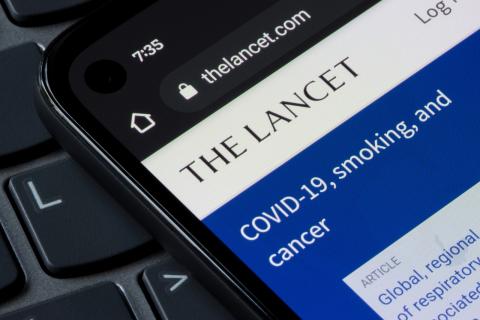Reactions to study linking rare genetic variants with left-handedness
10 % of people are left-handed, which occurs when the right cerebral hemisphere is more dominant for the control of that hand - whereas it is the left hemisphere in the case of right-handed people. To investigate the genetic basis of this laterality, scientists in the Netherlands have analysed genome data from 350,000 people in the UK biobank for rare genetic variants associated with this phenomenon. The heritability of left-handedness due to rare coding variants was low, at less than 1%. The research, published in Nature Communications, suggests that one gene - TUBB4B - is 2.7 times more likely to contain rare coding variants in left-handed people.

Gemma Marfany - zurdos EN
Gemma Marfany
Professor of Genetics at the Universitat de Barcelona (UB) and head of group at CIBERER
In the European population the percentage of left-handedness is around 10 % of the population. Researchers have tried to find a gene involved in this trait. After analysing and comparing the coding regions of more than 38,000 left-handed and more than 300,000 right-handed people in the UK biobank, they were only able to detect very rare genetic variants in heterozygosity in one gene, TUBB4, in less than 29 left-handed people (i.e. in less than one per thousand left-handed individuals). These identified variants have not been found in right-handed people, although similar variants in the same gene have been found in 89 right-handed people.
Although the sequencing and analysis work is correct, the interpretation of the results seems to me to be overestimated. The statistical predictive value, with these very, very low numbers, is irrelevant, as it cannot be shown that this gene is a determinant for this trait, particularly considering that left-handedness is very common in the population. I don't think it can be concluded that the gene for left-handedness has been found.
Amaia Carrión - zurdera EN
Amaia Carrión
Staff Scientist BCBL, and Marie Skłodowska-Curie & Ikerbasque Research Fellow
In this study they have investigated rare genetic variants (i.e. with a frequency of less than 1% in the population) that may be associated with left-handedness. This is a novel approach, as until now common genetic variation has been studied, which has identified that some genes related to the cytoskeleton (microtubules) may be associated with left-handedness.
In this case, exome data (protein-coding part of the genome) from the UK Biobank database was used. The large sample size (with thousands of individuals sequenced: more than 38,000 left-handed and more than 313,000 right-handed) has allowed them to focus on this type of rare genetic variation, allowing them to identify a gene (TUBB4B, also related to microtubules) that contains 2.7 more mutations of this type in left-handers than in right-handers.
This study therefore complements previous studies and indicates that rare genetic variation involving changes at the protein level also plays a role in left-handedness. In addition, the gene identified is closely related to those indicated by the other genetic studies, highlighting the possible role of microtubules.
Left or right hand dominance (left-handedness) is established early in development and, for most people, the right hand is more dominant. This suggests that there is probably a genetic basis and is the motivation for these studies on the genetic basis of left-handedness.
However, it is worth noting that the studies conducted so far, including this one, have very low heritability estimates (proportion of variance explained by genetic variation): 0.9-5% depending on the study. Twin studies, which tend to give higher heritability estimates, have estimates of up to 25%. Therefore, most of the variation we observe in the phenotype (right-handedness or left-handedness) is not explained by variation at the genetic level.
This study tells us that, in addition to the common variation studied so far, rare genetic variation is also involved, but the observed effects are very small and therefore only detectable in such studies with very large samples.
She has worked with the authors of this research on several projects.
Dick Schijven et al.
- Research article
- Peer reviewed



